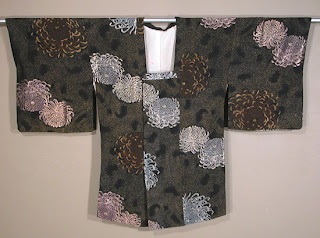
sodetsuke : kimono armhole
miyatsukuchi : opening under the sleeve
furi : sleeve below the armhole
ushiromigoro : back man section
fuki : hem gaurd
yuki :sleeve length
sode - guchi : sleeve opening
sode : sleeve
tamoto : sleeve pouch
eri : collar
doura : upper lining
okumi : front inside panel
maemigoro : front main panel
susomawashi : lower lining
Tomoeri : over collar
Uraeri : inner collar
















